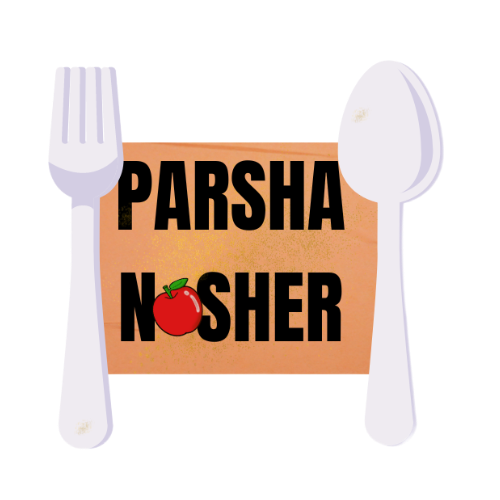I want to share what I realized at last week’s Shabbat service.
When the Torah service began, we sang, as usual,
(text and translation from Sefaria.org, to which this link leads).
I recalled having come across this text somewhere in the Torah, and being very excited that when we open the ark and carry around the Torah, we are recreating the experience of walking through the desert, the Ark of the Covenant before us, trusting that G-d will protect us as we are making our way to Israel.
This past Shabbat, however, I noticed for the first time that after the Torah service has ended, and as we put the Torot (plural of Torah) back into the ark, we say:
And when it halted, he would say:
Return, G-d,
You who are Israel’s myriads of thousands!
וּבְנֻחֹה יֹאמַר שׁוּבָה יְהֹוָה רִבְבוֹת אַלְפֵי יִשְׂרָאֵל׃
This was clearly a continuation of what was said when we take the Torot out (the different font should have clued me in long ago). As a big fan of knowing the source of a text, and the surrounding context, in order to know what ideas were intended to be brought in by way of its use, I had to find, once again, the source of the taking-out text. I wanted to know how far it was from the putting-back text, and what happened in between. I consulted with Rabbi/Cantor Judy Greenfeld, who was at services that day, who immediately located the source text in Parashat Beha’alotcha, Numbers/Bamidbar 10:35-36, where the two phrases appear one immediately following the other. In other words, we LITERALLY open the ark, take out the Torah, and say what Moshe Rabbeinu said when the Ark of the Covenant was lifted to be moved, and when we put them down we say what he said when putting down the Ark of the Covenant. As such, when we recite this, we are recreating the movement through the desert, where we were vulnerable and exposed, protected by G-d’s promise that we would survive. The Torot, which contain the words of G-d, stand in for the Tablets of the Covenant, on which was inscribed G-d’s words. And though we are not (thank goodness) carrying the Torot through the desert, Jews all over the world have carried Torot on their journeys, protecting the scrolls, while trusting that G-d would protect them. [1]
I then looked a few sentences further and saw:
It is a tree of life to those who grasp/hold it, and those who support/nurture it are fortunate/happy. Its ways are ways of pleasantness and all its paths are peace.
: עֵץ חַיִּים הִיא לַמַּחֲזִיקִים בָּהּ וְתוֹמְ֒כֶֽיהָ מְאֻשָּׁר: דְּרָכֶֽיהָ דַּרְכֵי נֹֽעַם וְכָל נְתִיבוֹתֶֽיהָ שָׁלוֹם:
which we sing just before closing the ark. This time, I read it a bit differently. Every Jew has a different way they connect more strongly with their Judaism. Though not exactly the way the text is written, it felt as though these words were saying “find what connects you to your Judaism. Embrace it and come towards to the Torah. Whatever it is that most connects you is good.” Rabbi/Cantor Judy pointed out that the word “Shalom,” peace, comes from the same root as “Shalem,” whole, or complete. Beautiful.
But what was the source text? We referenced Rabbi/Cantor Judy’s annotated Siddur (her thesis), and found it in Proverbs/Mishlei 3:17-3:18, where the sentences are reversed, and constitute the conclusion to a parent’s admonitions to his/her child to follow the ways of the Torah, and trust in G-d (which begins at Proverbs/Mishlei 3:1).
It was now clear to me. We recreate our travels through the desert when taking out and when putting back the Torah, but before closing the ark we remind ourselves that, though the physical Torah is being put away, its teachings and our obligations continue. Much as we use the Havdallah ceremony to help us carry the Shabbat throughout the week, these words help us continue to carry the Torah with us, through every action.
[1] My great-grandfather, Mordechai Aharon Pineles, in fact, came across a Torah when he was in Siberia, and traded the only thing he had of value, a gold watch, for it. He could not leave it in the hands of someone who would not value it. And when he came to Israel after the war, he brought the Torah scroll with him, donating it to a synagogue there.


2 responses to “Carrying the Torah through the Desert”
Comments from my Mother:
I thought about Saba Mordechai Aharon Pineles as I read your beautiful article. i am glad that you have thought about him too. He would have so appreciated your writing, the beautiful way that you are raising the children and the way you are conducting your life.
You, too, are carrying the Torah through the desert.
One more thing: If I am not mistaken, Rabbi Matt Rada told me that there is a beautiful midrash probably ain midrash rabba, that the Torah carried its carriers.
Last matter – I thought that since Moshe wrote the Torah – they carried the tora. But this is never secure in my thinking.
Also there were 2 sets of ten commandments – those written by G-d and broken and those written by Moshe..
Yishar Kochech!!!!!!
So beautiful